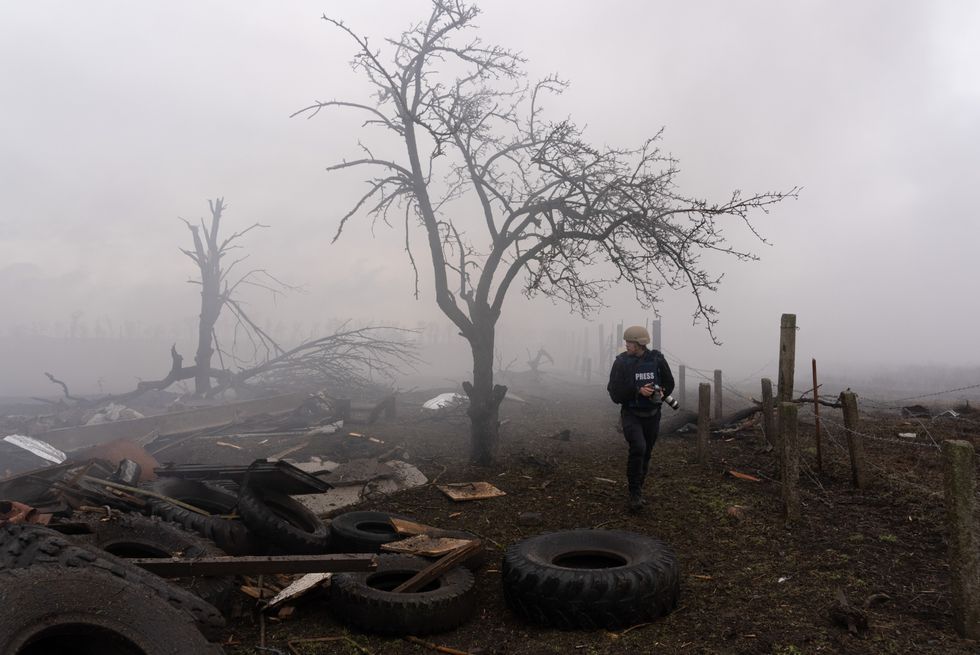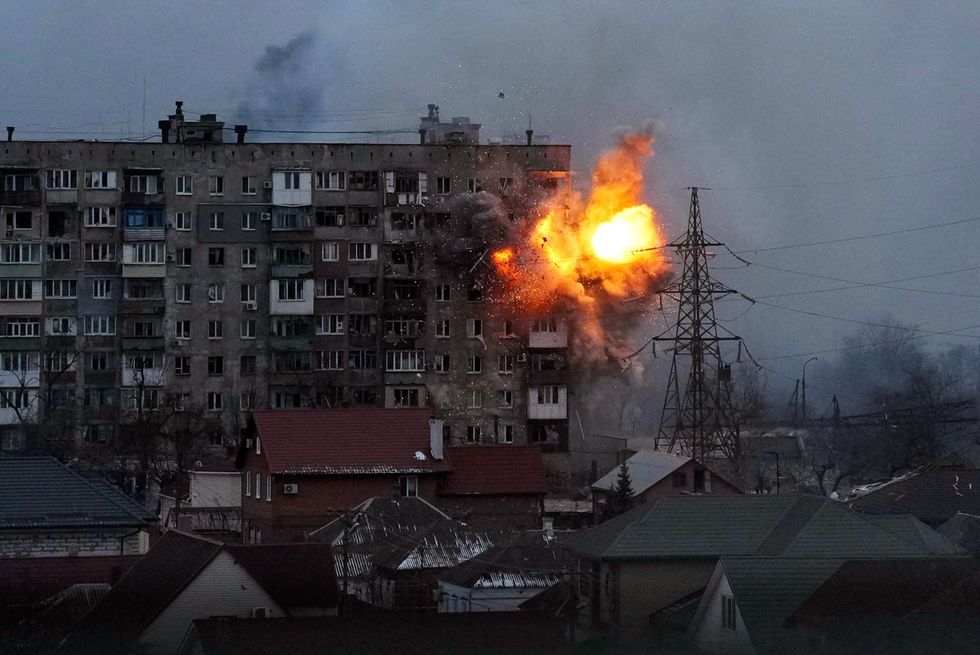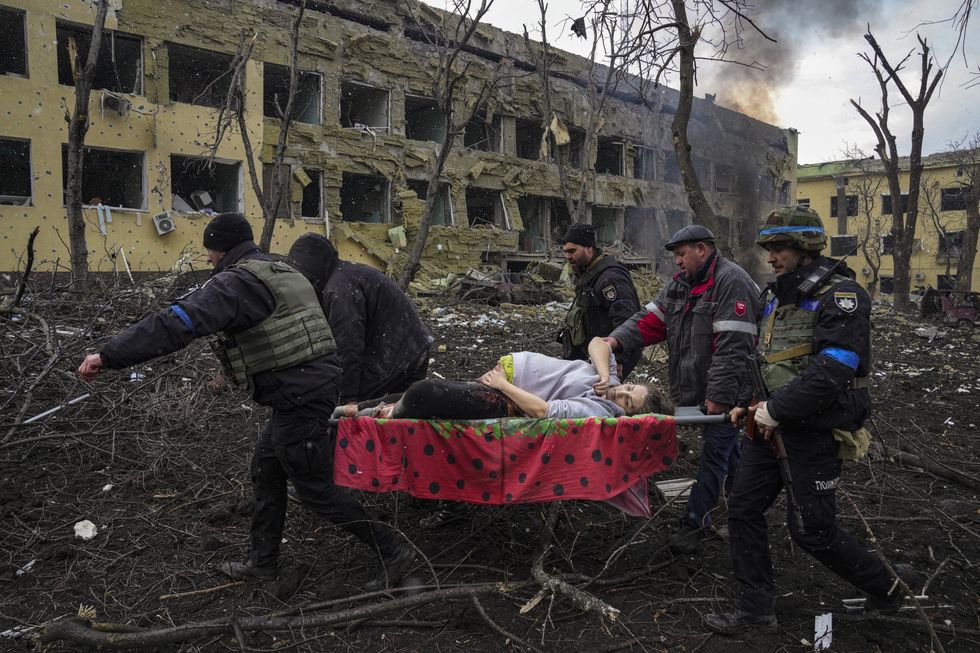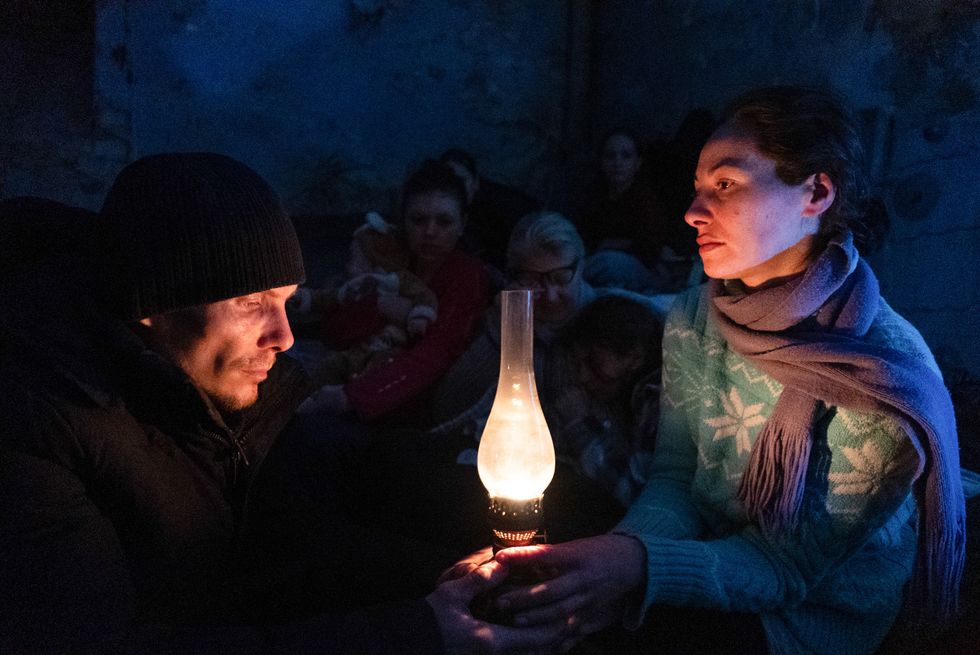
Mstyslav Chernov’s Oscar-nominated documentary 20 Days in Mariupol is a harrowing first person account of a city in crisis as it is carelessly invaded. It’s a work of journalistic art that is important and hard to watch, but crafted with the careful insight of an artist and humanist filmmaker. There’s a lot to learn.
Two years into the Russian invasion of Ukraine war continues to rage and the tragedy of senseless violence only escalates. It’s more important than ever to celebrate journalists and documentary filmmakers such as Chernov, who selflessly risked his life to use the art and craft of filmmaking to expose these atrocities through a medium we love and strive to achieve.
Want to know how it was made?
Well, lucky for us, Chernov was humbly willing to dive into his documentary filmmaking techniques, exploring ideas of maintaining consistent theme, and even what camera kit is best for this style of filmmaking.
Read on, and watch the documentary here.
The following quotes from Mstyslav Chernov are edited for length and clarity.
Find Characters and Theme in Documentary

“So the way I work is slightly different than just a usual, let’s say a classic documentary.
What I do—partially because one of my primary works is as a journalist, a conflict journalist, but not only. I’m also a writer and novelist. But I keep reporting and I keep shooting news and stories which are immediate and are published immediately, almost.That being said, I’m always on the lookout for a bigger [stories]. And that’s actually, I think, is the best way for documentaries, especially for the war documentaries, but not only for very tech style documentaries is to be, you can’t plan them ahead. You cannot be in one country and then think about, okay, well let’s do something about that.
You first go and then you start shooting. You look around and that’s when you find your story.
[The invasion of] Mariupol was a historical event. It was something that was important for me as a citizen, so it was personal. It was something that was important for me as a journalist because it needed to be immediately reported and told to the world. And it was unique because we were the only ones who were there reporting from the city.
At the same time, after the maternity hospital bombing, after that symbolic event, tragic event that happened, it was already clear to me that this is not just news story. This is a story that needs to be told in a scale and it has to be approached from a slightly different perspective. And that’s when I focused on not just shooting news, but also in making sure I have everything for the film.
But again, the main concern at that point was just to survive, honestly, to have batteries, enough cards, hard drives. So it’s just like a functional, practical problems that needed to be solved before even starting.
But yeah, I did think, okay, well if this is ever going to be a film, if I’m going to make it alive, who are my characters? How would I tell that story? At that point, Vladimir, an officer, police officer, already appeared, and I remember quite a funny feeling that he could be a character.
But again, because I didn’t look at it from a wider perspective in this chaos that is happening around us, having someone as, like I say, a stable character who everything that pivots around, it’s actually a good thing for the film.
I think that the main idea of the narrative structure of the film and then the development of the story was made when we actually made it out from the city.”
“Theme Dictates the Style. Style Dictates the Kit.”

“We know it’s a story of Mariupol, right? So how is it going to be told? We don’t know yet. We know it’s about the city and about its residents. We know our focus, which is really important when you’re shooting.
As an experienced DP, as an experienced cameraman, as a storyteller, I enter the room or I enter a situation and I start editing in my head, more or less. [While shooting] you need coverage—wides, closeups. What I have as a shooter’s kit, I will explain later, is built for that, for building a quick coverage of the scene.
That being said, you still, if you are working on a bigger project, you do have to know what is your focus or a theme.And one of the important themes of the film was an impact of the war on a civilian population. So let’s say when you are in a city like that, there are so many things you can shoot. You can focus on firefighters or you can focus on the soldiers, you can focus on the civilians. There are many ways to tell the same story, but when you do have a specific focus, then it makes it easier as you’re shooting this scene, or as you’re shooting, when you are already assembling the film later.
In every step of film development, you do have to have a focus or a theme in mind. I say focus because it’s something that is just a little bit before the theme emerges. You do already have a focus, but you don’t really have a theme yet. Figure it out.
One of the themes of the film— journalism and its impact, or lack of impact, and fake news—emerged later during the post-production, already during the editing process. You don’t always see that immediately.
And of course, your kit has to match the style of shooting and the style of the story you do. And my style of storytelling is a very raw kind of role, visual storytelling style—as immersive as possible for the audience. And for that, I have a small kit, a Mirrorless Sony camera, a shotgun mic, a couple more clip on mics, so very simple.
And basically, it’s all shot by me and it’s all written and directed by me. A lot of help is coming from the field producer, but that’s a luxury. I had the luxury of a field producer because it’s not only about shooting.
Of course, you also need to talk to people, you need to keep in contact with them. You have to make sure that you’re delicately handling a situation when people are in their most vulnerable. So it’s a lot of human interaction happening at the same time and much more than it would be in a normal kind of documentary. You are on the ground, and when you don’t have time, it’s important that you have someone that supports you and makes that connection and makes sure you don’t just run off.
So, let’s say a style dictates a theme dictates the style. The style dictates the kit.”
Find Appropriate Lenses for on the Fly Coverage

“I usually work with two lenses, sometimes three, but again, depending on the project I’m working on. But this one specifically, I use mostly two lenses.
I use a 24-240mm Sony lens, which gives me [options] even in the most intense environment, to be sure I get enough establishing shots and closeups without moving much inside the scene and interfering with people who are in distress or who are working.You don’t want to be on the way of doctors or you don’t want to be away in the way of the soldiers.
So you have to have a technical solution for being able to zoom in, but at the same time, to establish this scene.
The second lens I’m working with, it’s a 40mm 1.2 Voigtländer for the most challenging dark environments. [For example] a basement or sometimes you work without light, without anything.
And again, I’m going for the most naturalistic film as possible, naturalistic picture. So I don’t like to use external lights. I don’t like to add any artificial feeling to the visuals.”
Working With an Editor in The Midst of War
“That’s the difficult part of it because you want the audience to feel how it’s going to be there. You want to immerse them into this experience. But at the same time, you can’t just drop footage, however important it is, on the audience and expect that they will stay engaged for 90 minutes or they will understand the story. It still has to follow cinematic rules. It still has to be, the story still has to have a narrative arc.
The editing has to have its pace, and themes have to be established and reaffirm. And if you use music, because the nature of footage, the nature of what is happening in front of us is quite fragmented. So you have to make sure that everything feels connected and received as one. And music helps in that, right? So you have to build late motifs for helping the audience to associate certain scenes or certain feelings with later scenes in a film. All that has to be done.
So it is two competing efforts here. The one is to make a film as naturalistic as possible as the experience. At the same time, make sure that the craft is there. So you have to hide—not hide, but you don’t force this presence of the production of the craft on the top of the film. You just keep it under what’s happening on the screen, let’s say.
Yes. So a lot of things, a lot of what was shot and what you see in the film was already edited as I was in Mariupol. And it was actually quite a good reference to Michelle Mizner, an amazing editor who worked with me on this film.
When we started working, she already had examples of the kind of editing I saw for certain scenes that were already published. At that point, around 40 minutes of what I shot was published and I had about 30 hours, which is not much. It’s really actually a quite little, which as a separate challenge, because it means that you don’t have much to tell a story. You have to be creative.
So some scenes were already pre-edited and we expanded on them. And they were pre-edited in the worst conditions possible. You shoot and then you drive, or you run to a place where there is little connection and you have very little time to edit. So you basically hide from bombs. You sit under the stairs or there’s a hiding in the basement. You’re transferring all the footage from cards. You are editing, and at the same time you’re connecting and trying to speak to your editors about what’s going on without other news. You’re describing what you saw and you are editing at the same time.
So it’s a very stressful process, but it’s not something I’d never done before. So it is a bit easier for me to do than probably for a lot of other filmmakers because I’ve been through this for years.”
A Narrow Perspective is Key to Story

“In the beginning when we started editing the footage, when we started looking for the way the story to be told to different narrative tools, we recorded a lot of interviews of survivors who you see in a film and who were able to leave the city.
So they share their experiences with us, and we expected that we will be intercutting these interviews, very emotional, amazing interviews with the footage that I already had. And that somehow didn’t work.
We tried and it, it didn’t work. And we thought about that for a while, why it doesn’t work, and it didn’t work because you left the city for this. As a viewer, as an audience, if you look at that, you’re releasing the tension and you go somewhere else and then you come back [to Mariupol] and that’s exactly what we didn’t want to do.
We wanted to build up the tension, we wanted to immerse the audience. So we decided to narrow the focus down to only the 20 days that I was in the city. And so we didn’t use those interviews for this film.
Also, there was a wish for me to— a journalistic wish—to include a pre-story of Mariupol, what happened to Mariupol before that? How did it come, for it to become a huge… It’s already such a big target for Russia.
And also I wanted to include what happened to drama theater that was bombed after we left, and almost 500 people died in that bombing. And then there was this amazing footage that was coming out of Mariupol before the fall of the city, how Russia was bombing the Azovstal [iron and steel works] factory.
So all those images were important, but they were not what I saw and so we decided to limit [the focus].
Here’s another example. In one of the first cuts, we had archive footage of Russian soldiers going through the city and taking the city. It’s the beginning of the third act when we escaped the hospital. And again, we decided not to use that because it’s not what I saw.
So, narrowing the perspective. That’s my advice to filmmakers. We are surrounded by so much news, by so many kinds of different information that is coming to us from different mediums, and our audience is quite educated by now. With all that noise that is happening around us, for a film to have a very narrow perspective is what really works for the audience.”
Watch 20 Days in Mariupol in full here.
Author: Grant Vance
This article comes from No Film School and can be read on the original site.
